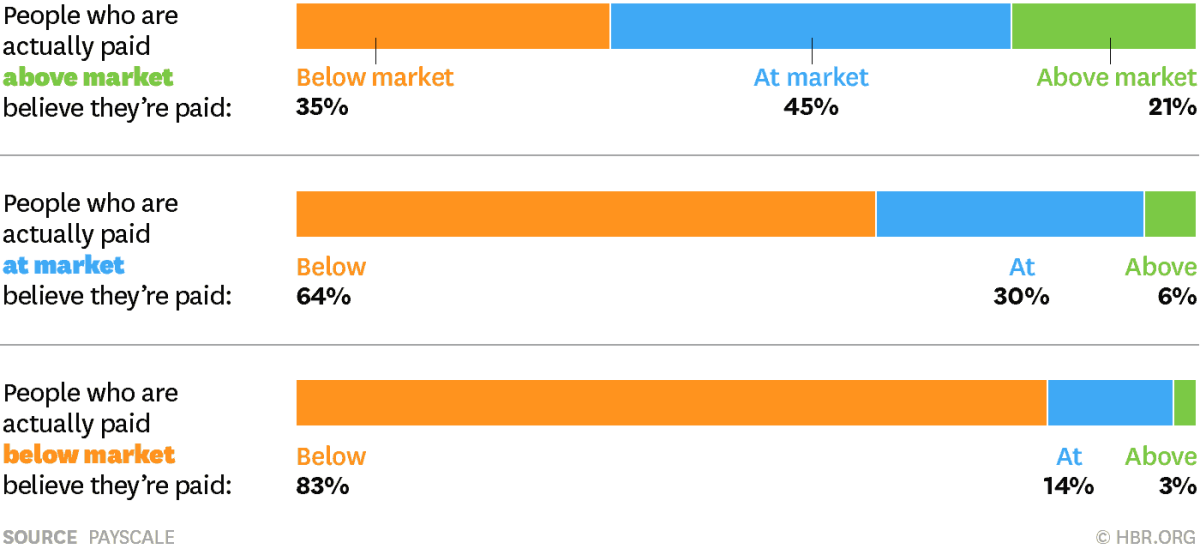Predictability and Transparency in Compensation: A Best Practice Guide
Introduction
In any industry, companies who have a strategic approach to compensation will likely outperform their competitors. As trucking and logistics companies compete for market share, a parallel battle is being fought over the labour needed to service an ever-expanding market. It is no longer just what we pay that matters to current and prospective employees. How that pay is perceived and received is just as important as dollar amount. Having a comprehensive compensation strategy, that is predictable and trends towards transparent is becoming increasingly important in an industry with different pay types.
Whether you are looking to find new drivers, dispatchers and support staff, or trying to retain those already critical to your business, understanding and employing compensation best practices can put your company in the passing lane.
This guide outlines current compensation best practices supporting fleet employers of any size position themselves as employers of choice amongst prospective and current employees. Topic areas covered include:
- The benefits of pay transparency and predictability
- Steps to help you create a robust compensation strategy you’ll want to be transparent about
- Best practices in communicating compensation
- How compensation relates to key current HR trends
The Current State of Industry Compensation
- Labour shortages, specifically for Truck Drivers, continue to be a key concern and this is expected to continue and worsen in post-pandemic economic recovery. Key factors being the aging of the current workforce and difficulties attracting women and youth.
- Challenges in attracting and retaining long-haul drivers. Identified causes were lack of work-life balance and the complexity and unpredictability of pay structures.
While a compensation strategy alone doesn’t directly resolve these challenges, having a clearly articulated compensation philosophy, defined structures, policies and practices, and an on-going communication plan will have an overarching affect on them.
An important first step is understanding the current structures, their prevalence and impact.
Truck Driver Pay Types
Traditionally, truck drivers are paid one of four ways; by the hour, by the kilometer/mile, a mix of both, or by salary. Within our Top Fleet Employers, this breaks down is as follows:
| Pay Type | Company Drivers | Owner/Operators |
|---|---|---|
| Company pays by the hour | 22% | 3% |
| Company pays by the km/mile | 3% | 21% |
| Company pays a combination of the above | 71% | 72% |
| Company pays drivers by salary | 4% | 3% |
Trucking HR Canada’s publication, The Road Ahead: Addressing Canada Trucking and Logistics Industry Labour Shortages provides further insights into the breakdown of long-haul vs. short-haul driver pay types. 64% of long-haul drivers report per km/mile pay as the most common pay type, versus short-haul drivers who are more commonly paid by the hour (almost 75%).
In addition, there are several variable (bonus) plan options, or other forms of pay, that companies introduce to further incentivise drivers.
These types of pay structures are seen throughout the industry, though they have the potential to be, and in fact in some cases are, overly complicated. This may make it hard for drivers to understand and predict their compensation. As we demonstrate later in this guide, predictability is a key factor that affects how employees perceive their pay, and ultimately, it impacts how satisfied with their pay they are.
Base Pay vs. Variable Pay
Base pay is the amount of money that you pay employees as part of their regular paycheque. This could include an hourly pay rate or a base salary.
Variable pay is paid to employees in exchange for specific performance measures. This could be any type of bonus, incentive or commission payment.
Employee Perceptions of Pay
Some of the factors impacting employee mistrust are:
- Compensation isn’t always discussed. Conversations about compensation can be infrequent, and if they are done one-to-one with an untrained manager, they can be uncomfortable. If compensation changes are communicated only by letter, this leaves no opportunity for questions or context.
- Without context, people tend to fill in the blanks themselves. They draw conclusions that are often incorrect or only partially true. These conclusions are then discussed with other employees and they are believed to be fact or truth.
- Employees may have expectations about the level of compensation they should earn, or what they think others in their position (internally and externally) are earning. These become the measures against which they compare – even if those measures are inaccurate. Typically, if employees guess wrong, they guess that they are underpaid. [SEE GRAPHIC BELOW]
- Without clearly defined and articulated pay practices, employees are left to assume when and how they can earn more. If these assumptions are incorrect, they will become very quickly demotivated for the lack of reward for their efforts.
- Employees don’t always see the big picture. They don’t readily understand where they fit within a company’s compensation structure and further, they forget or don’t know all of the compensation components they receive. Some elements of their pay are forgotten.

Every employer has a “Pay Brand” – the internal and external perceptions of how the company pays. These can either be intentionally created, or they are built over time organically through the experiences of employees or interactions with candidates. It’s becoming more important to influence the Pay Brand for your company. Doing so will help to better attract, retain, motivate and engage your employees.
Within industries, there are also pay perceptions, and in the trucking and logistics industry currently, the perception is that the pay structures for truck drivers are complicated and unpredictable. Some people may leave, or not enter the industry at all, due to these perceptions. Taking the lead to impact these perceptions will certainly give your company a competitive leg up.
Two Emerging Practices: Transparency & Predictability
Pay Transparency
The traditional power dynamic between employer and employee is shifting. In highly competitive markets experiencing labour shortages (such as trucking and logistics), the negotiating power of employees is strengthened, and employers are challenged to become more transparent in compensation practices and discussions in order to attract top talent and prevent good employees from leaving.
Pay transparency is a spectrum. [SEE CHART BELOW] On one end, common in the public sector and government, are organizations that readily disclose salary information and pay structures – even publicly posting an individual’s earnings for anyone to see (for example, Ontario’s Sunshine List). On the other end, the practice in some companies is for complete secrecy and confidentiality. These organizations keep all compensation information under tight lock-and-key. In the middle, there are organizations who disclose some information on pay rationale in a broader sense. They may disclose pay ranges for the individual’s role, inform employees on how market data is obtained, and/or they share details on the merit and bonus process.
| Low Transparency | Some Transparency | High Transparency |
|---|---|---|
| Your organization provides employees with a paycheque and advises on changes to their personal pay. | Your organization has defined pay practices in place and employees have broad access to pay rationale and ranges. | Your organization ensures employees have access to all pay information and decision methodology. |
While most organizations are not comfortable with full pay transparency, the trend is to move towards greater transparency, especially when it comes to providing rationale and decision methodology.
Embracing pay transparency may no longer be a choice. Consider:
- The increased presence of public, self-reported salary sites – such as Glassdoor, or free on-line resources, such as Payscale. These sites provide employees with access to information they never used to have.
- Greater requirements for pay equity to ensure equity for other traditionally disadvantaged groups – women, visible minorities, persons with disabilities, and Indigenous people.
Pay transparency also holds organizations to a higher standard when it comes to compensation decision making. With transparency comes accountability and increased fairness.
By enhancing pay transparency, organizations can more readily earn employee trust.
Legislative Requirement: Pay Transparency Measure
Effective January 1, 2021, federally regulated employers, with 100 or more employees, were required under the Employment Equity Act to report their salary data in a way that shows aggregated wage gap information. The intention behind these measures is to raise awareness of wage gaps experienced by women, Indigenous people, persons with disabilities and visible minorities working in federally regulated workplaces.
- Wage gap information will need to be included as part of the annual reporting on employment equity for June 1, 2022 onwards.
- The calculation for “salary” has been amended and it is no longer a requirement that employers annualize salaries (i.e., calculate all remuneration paid for work performed by an employee in the form of salary, wages, commissions, tips bonuses and piece rate payments, rounded to the nearest dollar). Previously, salary did not include overtime wages. New specific data elements, that employers can extract from their payroll and HR information systems, will include hourly rate of pay, bonus pay, overtime pay, and overtime hours, to determine hourly wage, bonus, overtime hours, and overtime pay gaps.
- Employers are required to retain additional records, including: salary information (excluding overtime and bonus pay); the period over which a salary is paid; the number of hours worked that can be attributed to the salary earned; the bonus pay paid during a reporting period; overtime pay in the reporting period; the number of overtime hours worked in which the overtime pay can be attributed.
Pay Predictability
There is a lot of research around the psychological importance of predictability. In essence, predictability helps foster a sense of security. If we consider the desire for predictability in pay, that sense of security becomes even greater as pay quite literally helps provide the base of Maslow’s hierarchy of needs – water, food, shelter.
Even if organizations are providing base-line measures to ensure “survival”, employees who feel disconnected from their pay, or who don’t understand how it is calculated or earned, will most certainly not be working towards the organization’s desired outcomes.
Simply put, wage and bonus plans are put in place to drive certain behaviours that ultimately lead to larger goals. Compensation then becomes an opportunity to communicate:
- What is important to the company?
- What are the expectations of you and your role?
- How will you be rewarded if those expectations are met?
Unpredictability in pay leads to disconnection from these important factors.
With frequent pay types, such as weekly or monthly earnings, pay plans should be so simple that at any time, a person can pick up a calculator and figure out what they are going to earn on their pay cheque. This is how they predict their earnings. This is how they feel secure and confident in their income.
Other factors that help promote predictability in income include: regularity of pay increases, frequency of bonus payment, and understanding who is involved in pay decisions and how they are made.
A great deal of good will can be earned by saying what you’ll do and doing what you say.
| Transparency | Predictability |
|---|---|
| •Promotes employee understanding •Provides direction in earnings potential •Mitigates pay inequities from arising | •Drives business results •Creates a sense of security •Helps attract strong candidates |
Creating a Comprehensive Compensation Strategy
In Trucking, employee pay represents one of the largest marginal costs within an organization. A well thought out strategy can support not only the company’s bottom line but also can contribute to an employee’s satisfaction and wellbeing.
A trend we are seeing is fleet employers moving towards a more simplified, pay-by-the-hour model. In Trucking HR Canada’s Guide report The Road Ahead: Addressing Canada’s Trucking and Logistics Industry Labour Shortages it was noted that between 2018 and 2020, more than one in five (21%) long-haul employers reported having changed the pay structure for their truck drivers, with three quarters of them abandoning mileage pay. This change definitely helps with predictability and transparency but does it help drive the company goals and desired employee behaviours? That is something that will be unique to each fleet employer. Creating a comprehensive compensation strategy will ensure you are making strategic pay decisions based on your company’s current state and desired goals. In doing so, keep in mind the real labour market challenges and employee perceptions.
6 Steps to a Robust Program
Developing a robust compensation program includes the following steps:
1. Create a Compensation Philosophy
A compensation philosophy is the foundation for any compensation strategy. It is the organization’s formal, documented approach to what they want to achieve through compensation, why it’s important and how they will spend their budget to make that happen. When done well, the compensation philosophy provides a framework for decision making.
2. Define the budget
It’s important to clearly understand what funds are available for compensation. This can be expressed as flat amount or as a percentage of revenue or profit. Expressing the budget as a percentage of revenue or profit better allows for changes (up or down) in business performance. As part of the budget, it’s important to determine when and how pay increases are given and what percentage of the budget is allocated to base pay vs. variable pay.
3. Determine Pay Structures
Pay structures provide a framework for the hierarchy of roles and the associated value, in terms of pay, that an individual who works within that role will be paid. There are a number of pay structures types that can be used, such as pay bands, pay grades or salary ranges. In order to determine where a position falls within the pay structure, you may need to perform a job analysis. A job analysis allows you to really understand the skills and competencies required to perform well in a job, as well as the expectations of a role. See the Job Bank of Canada link for more information on how to conduct a job analysis and create comprehensive job descriptions.
91% of Top Fleet Employers have formal pay scales or ranges based on roles.
4. Develop Pay Practices
When hiring, promoting or adjusting pay, ensure you have standardized practices to ensure a consistent approach throughout the organization. It’s important to consider and define how your company approaches compensation decisions throughout the employee lifecycle. Considerations like – What is the hiring range for new employees? How frequently are jobs re-evaluated or assessed against the market? How often do we provide merit increases and how are they decided?
5. Create Necessary Policies
Policies related to the organizations pay practices may be required for both employee communication purposes and to ensure adherence, equity and effective decision making throughout the organization. Some policies that are related to the company’s compensation strategy include: paid holidays, time-off, pay-advances, and bonus payment terms.
90% of Top Fleet Employers have a Compensation Policy.
6. Monitor and Review
A well defined compensation strategy is fluid. Be prepared to make modifications and adjustments over time. That doesn’t mean re-hauling an established program annually, but it may mean implementing annual checks and balances to ensure legal compliance and competitive positioning.
The Importance of Communication
Employers can benefit from a strong compensation communication plan by:
- Providing awareness of company goals, priorities and expectations.
- Motiving employees to meet or exceed those expectations.
- Informing on difficult decisions to enhance understanding and acceptance.
- Recognizing the hard work and success of individuals and teams.
Communication Best Practices
Compensation communication can (and should) include many methods. Like any other communication strategy, there is a need to identifying the who, when, why and how behind each communication. It is also important to approach messages, even positive ones, with sensitivity as pay is personal. Taking a one-size-fits-all tactic may backfire.
Below are some best practices to consider when it comes to compensation communication.
Share Company Results & Goals
Employees who feel connected to the overall performance results and goals of the organization are more engaged and motivated. By sharing your company’s progress with employees, and importantly, by communicating how the individual can benefit from this success financially (if applicable), will help employees understand how what they do contributes to this success.
Some ideas on how to share goals:
- During employee on-boarding
- Quarterly Calls
- Monthly Dashboards
- Employee Newsletters
- CEO Updates
- Manager Update
Grant Access to Information
Employees who have access to compensation data and information will have higher levels of trust and understanding. This is a critical factor to increased transparency and predictability. It also helps to ensure employee expectations are managed. Some examples of where you can provide more access to information includes:
- Making pay structures available to everyone.
- Clearly articulating when and how pay increases take place.
- Providing market data for comparable industries and occupations.
- Distributing bonus plan documents that include information on how bonuses are calculated.
Explain How & Why
No matter the decision or change in compensation, it’s recommended that details on how and why they were made be provided. This is the context that will lead to higher acceptance and understanding of decisions. For example, instead of just saying you received a pay increase of 2%, provide information on how the 2% was determined. “The company created an overall merit budget that took into account market information, cost-of-living data, our last year’s results and this year’s budget tolerance. We then determined individual raises based on performance appraisal scores.”
Demonstrate Opportunity
A good compensation communication strategy will include ways to show employees what their earnings potential is. This could mean how and when they can earn more in current roles (through merit increases, training and development, or bonus plans) and it also means showing them the earning potential available in future roles. Be sure you don’t inflate the opportunity or earnings potential or take a one-size-fits-all approach. Managing expectations is important or you can easily tip from motivation to de-motivation and frustration.
The Need for Manager Training
The majority of communication about compensation takes place between managers and their direct reports, yet managers sometimes have no training on how to do this effectively. Often as a result, managers are uncomfortable having pay discussions. They may actually have their own mis-perceptions or bias about the employer pay brand or how their team members’ salaries compare to others within the company or in the market. Pave the way for smoother compensation discussions by educating managers on the compensation philosophy and by providing context and transparency on decision making.
Preparing for a One-to-One Compensation Discussion
Prepare
- Schedule the discussion in a quiet, private and relaxed setting where there won’t be interruptions.
- Review your notes and any additional information you have – for example, market data, the company’s decision-making rationale, or the organizations financial situation.
- Jot down some of the key speaking points.
- Ensure there is enough time scheduled to have a meaningful discussion.
Conducting the Meeting
- Explain the reason for meeting.
- Provide details of the decision – including how and why it was decided.
- Be honest and clear when delivering the message.
- Ask questions of the employee to ensure understanding.
- Allow time for the employee to ask questions.
- If you don’t know how to respond to a question, don’t. Advise you will follow up and make sure that you do.
- Provide information to the employee about how they can positively impact their compensation (if possible).
- Express your commitment and support to the employee’s success.
Follow-up
- Allow an opportunity for the employee to follow up at a later date if there are lingering questions.
- Provide details of the discussion in writing.
Total Rewards Statements
Most employees equate their pay to the amount that they see on their pay cheque, or worse, the net amount that is deposited into their bank account on pay day, grossly under-stating the true picture. Total Rewards Statements (or Total Compensation Statements), provide organizations with a great opportunity to outline the full financial investment they make in employees.
Total Rewards Statements can be designed in a number of ways. Companies should consider what they want to include on a Total Rewards Statement in order to remind employees of their true earnings. It also provides employers with an opportunity to reinforce key messages about the company and their compensation strategy.
Once designed, it’s important to capitalize on this communication opportunity. Often employers print and mail the statements, but consider also taking the time to talk through the statement with each employee.
HR Trends & Compensation Impacts
Diversity, Equity and Inclusion
As mentioned earlier, the Federal Government has implemented greater transparency into the Employment Equity Act to ensure inequities in pay for frequently disadvantaged groups are highlighted. Even if your company is not mandated by these legislated requirements, it’s helpful to take a closer look into your pay practices to ensure they are equitable and fair. Generating compensation data (like that required for employment equity reporting) will allow you to identify any gaps and implement strategies to course correct. Transparency also helps ensure that managers are making fair and equitable pay decisions.
Digitization & Automation
The on-going introduction of digitization and automation within the workplace has, and will continue to fundamentally change the way we work. The skills required to successfully perform in a role could look quite different than they did even five years ago. Companies will benefit from more frequently performing job evaluations. The re-evaluation could cause a major shift to your pay ranges. Be sure to understand how those shifts impact overall budgets.
Flexibility is the Future
One of the most obvious forced changes brought on by the Covid-19 pandemic was the mass movement to remote work for job functions that could. A continued flexible work environment could bring with it the need for revised compensation strategies. Increased opportunity for remote work opens the possibility to recruit from anywhere. Traditionally, companies take work location into consideration when assigning pay grades or defining pay ranges for certain roles. Many fleet employers already take work location into consideration, typically adjusting pay rates based on where the company worksite is located, or where the employee is recruited to work from. The question now becomes, should work location still be a factor if individuals are working from home? Will the employee’s location now matter more? Should location even come into play? Companies may now look to national averages to inform compensation decisions, rather than regional data. If changes are being made to your company’s talent strategy, consider how they also impact your company’s compensation benchmarking and pay ranges.

This project is funded in part by the Government of Canada’s Sectoral Initiatives Program (SIP)



